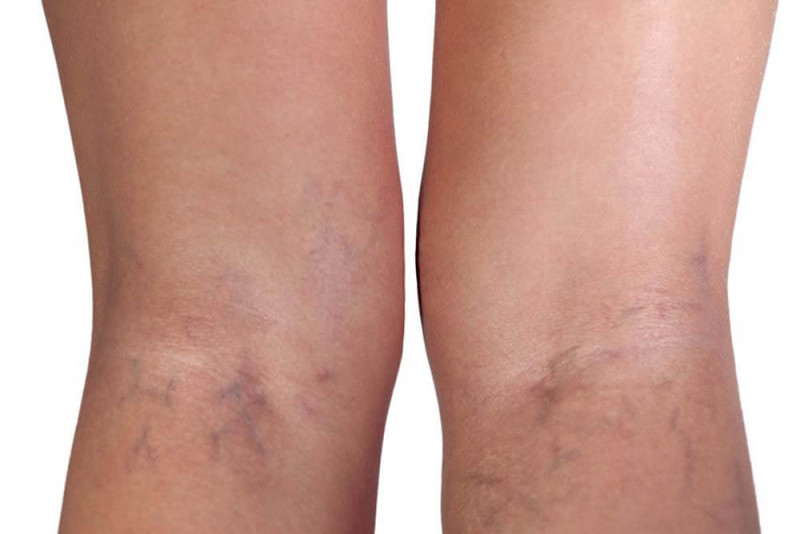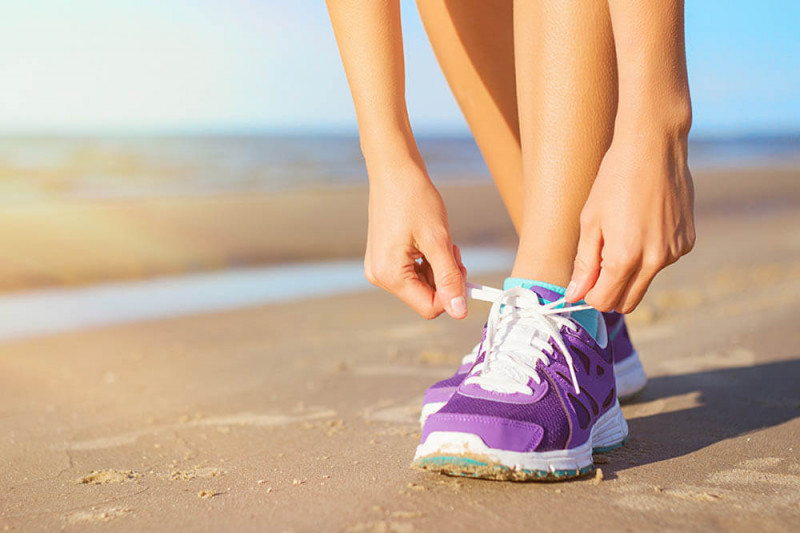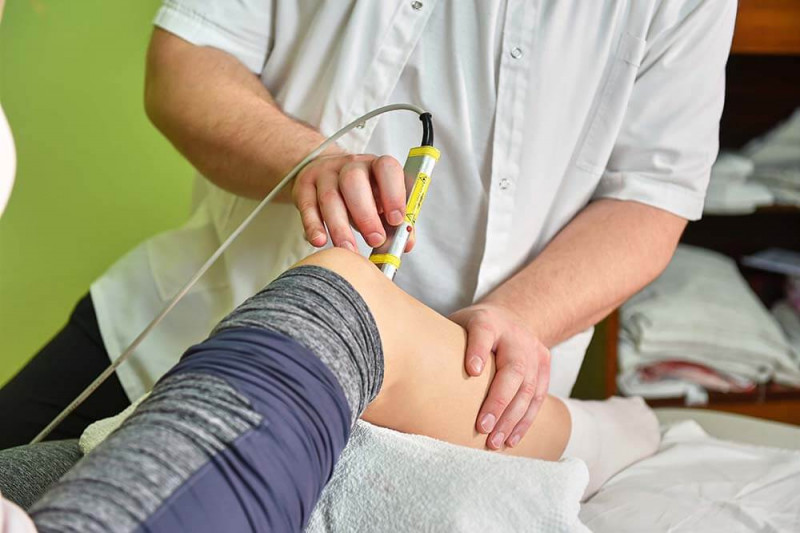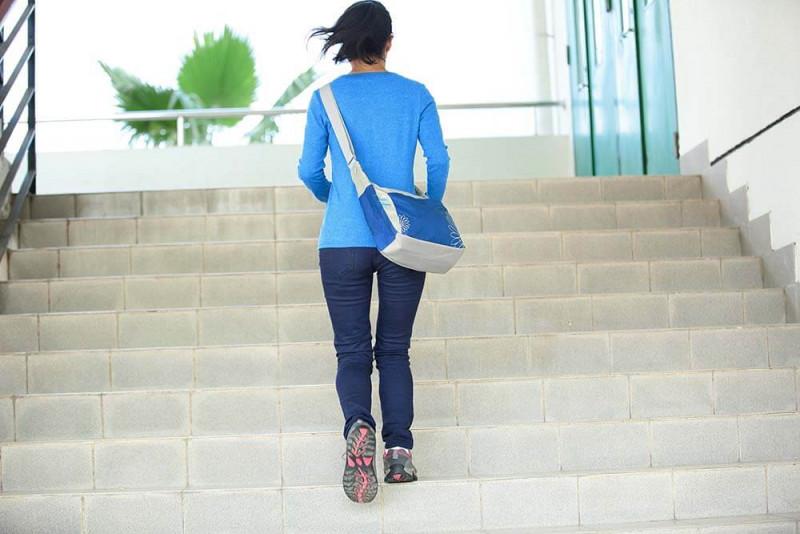

By Dr. Alexandra Sisam ND | Updated by Birgitta Kautz
Varicose Veins
Varicose veins are twisted and swollen veins close to the surface of the skin. They form when blood pools in the vein, causing it to expand and become visible as a bulging cord. Most often they appear on legs and feet.
There are different types of blood vessels in our bodies. The so-called arteries pump blood from our heart to the body. Veins are the blood vessels that bring blood back to the heart.
The arteries are using gravity to carry the blood away from the heart. However, the veins must transport the blood against gravity. They often have valves to prevent the blood from flowing back.
The veins and valves are not as muscular as the arteries. The walls of the veins can get weaker over time and the valves can stop working properly. This makes it more challenging for the veins to return the blood to the heart.


Varicose veins vs spider veins
Both appear as purple squiggly lines on a person’s skin. However, spider veins are smaller blood vessels that are not raised. They can look like a spider web, hence the name, or tree branches.
More women than men are affected by spider veins or varicose veins - pregnancy, older age, or being overweight are factors that increase their risk. Varicose veins are most common in the leg veins, while spider veins can be found on the legs or the face.
Spider veins are usually painless and more of a cosmetic problem. Varicose veins are more serious and varicose vein symptoms are far more common. The pooling of blood and resulting congestion can cause other medical problems. These include muscle cramping at night, pain, and swelling (edema) in the lower legs.
Varicose veins develop when the vein walls weaken and/or the valves fail to close the vein properly. The blood can then flow backwards and cause swollen and enlarged veins.
There are many factors that increase the risk, such as:
- Lack of exercise/standing or sitting for long periods of time
- A family history of weak connective tissue or varicose veins
- Ageing
- Overweight
- Pregnancy
- Constricting clothing, especially pants
- Smoking
- Unhealthy diet
- Various cardiovascular diseases
Varicose veins vs chronic venous insufficiency
Chronic venous insufficiency or CVI is a long-term condition. The normal blood flow from the legs back to the heart is disrupted. Most of the time, the problem is a malfunctioning of the valves in both deep and superficial leg veins.
Chronic venous insufficiency can lead to varicose veins but can also occur without them. This means that not all people with varicose veins have CVI. However, varicose veins are a sign of blood flow problems. Contrary to CVI, they involve the superficial veins only.
In the early stage, not everyone affected experiences varicose veins symptoms. However, in the advanced stage, varicose veins can lead to sores or even a "leg ulcer". This is an ulcer on the lower leg or in the ankle area.
Another possible complication is that the walls of affected veins can become inflamed. Doctors speak of phlebitis, and it can affect superficial or deep veins. This can lead to thrombophlebitis, an inflammation that causes a blood clot to form.
If blood clots form in veins that are deeper in the body, it can result in a dangerous condition known as deep vein thrombosis. If the blood clot stays in this area, it can block the blood vessel.
Sometimes such a thrombus or clot detaches and travels through the bloodstream toward the heart, lungs, or brain. It can get stuck in there and result in a life-threatening heart attack, pulmonary embolism, or stroke.
It is important to treat varicose veins to prevent these serious complications.


Lifestyle changes can help prevent the formation of new varicose veins and existing ones from worsening. These changes include:
- No sitting or standing for long periods of time.
- Increasing physical activity and daily movement to engage the muscles around the veins.
- Wearing compression stockings puts positive pressure on the veins to help them bring the blood back to the heart.
- Increasing foods that contain collagen or help with collagen formation, such as vitamin C. This can help strengthen the vein walls.
These home treatments are much less invasive than surgical options such as sclerotherapy or vein stripping.
It is much easier to prevent their formation than to get rid of varicose veins. However, depending on their severity, there are multiple options for varicose veins treatments.


Treatments for varicose veins include:
- Phlebectomy - affected veins close to the surface of the skin are removed through small cuts
- Endogenous laser treatment - diseased veins, including spider veins, are closed with laser heat
- Sclerotherapy - often used for smaller veins, a chemical is injected to close them
These surgeries are minimally invasive. Often, the treatment can be done at the doctor’s office and patients recover in less than one day.
There is no medication to heal varicose or spider veins. However, some plants have been shown to positively affect the vein walls. They can help prevent and relieve the condition.
Here are some easy tips for lifestyle changes:


- Decrease the amount of time you stand or sit in one place.
- Move daily - this includes physical exercise such as walking, cycling, swimming, running, or playing sports.
- Elevate your feet at night by putting them on a pillow to help the blood flow back to your heart more easily. This can also help relieve varicose vein pain in the legs.
- Be cautious of constricting pants that can compress the veins.
- Do not cross your legs when you are sitting – this compresses the veins and makes it harder for the blood to flow back to the heart.
- Try taking the stairs instead of the elevator.
- Incorporate other movements into your workday with stretching, swinging your feet, running on the spot, or standing on your tiptoes.
- Massage your legs with a dry brush or loofah brushing toward the heart. This helps promote the flow of blood in that direction.
Sudden vein problems: Be on the lookout!
Consult your doctor without delay if you notice uncharacteristically severe symptoms in a leg. This includes swelling, skin discolouration, or a sensation of tension or heat and pain.
